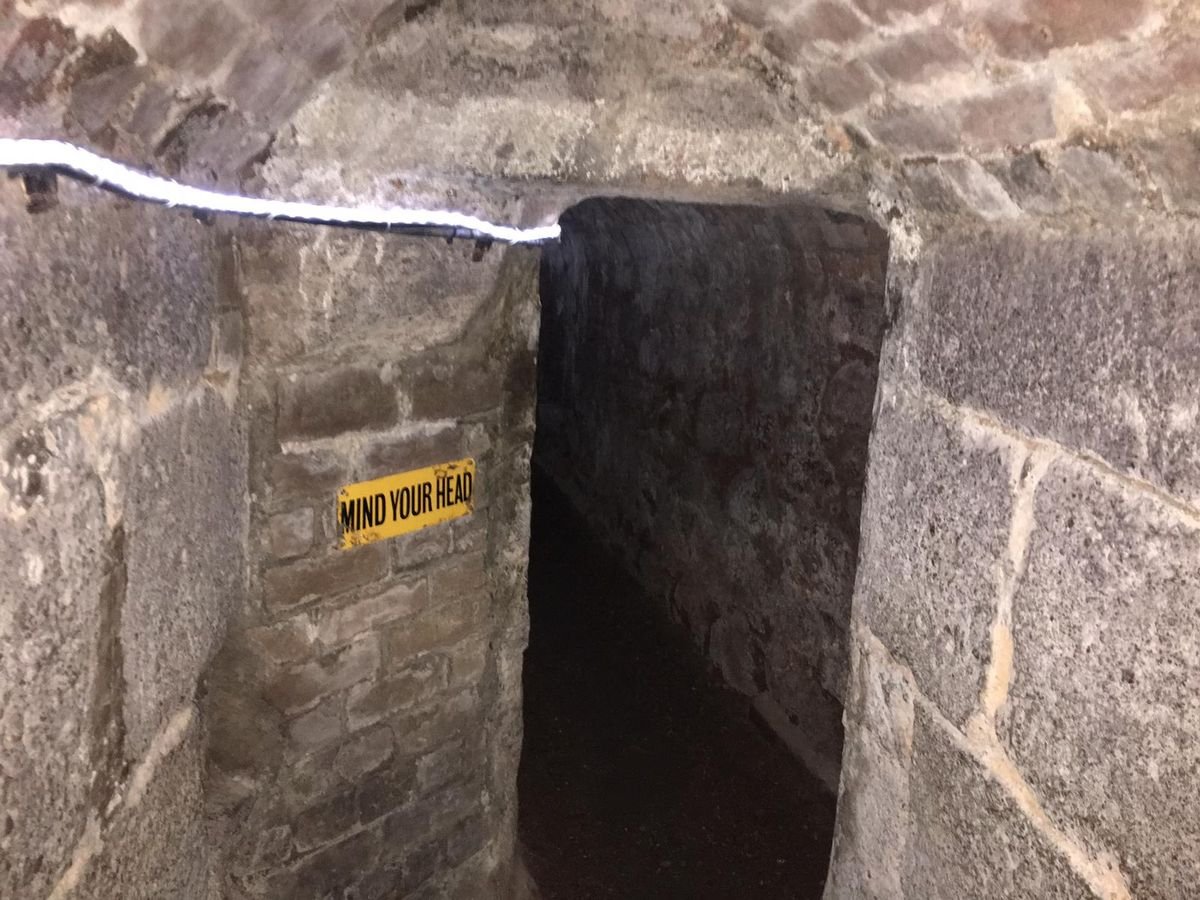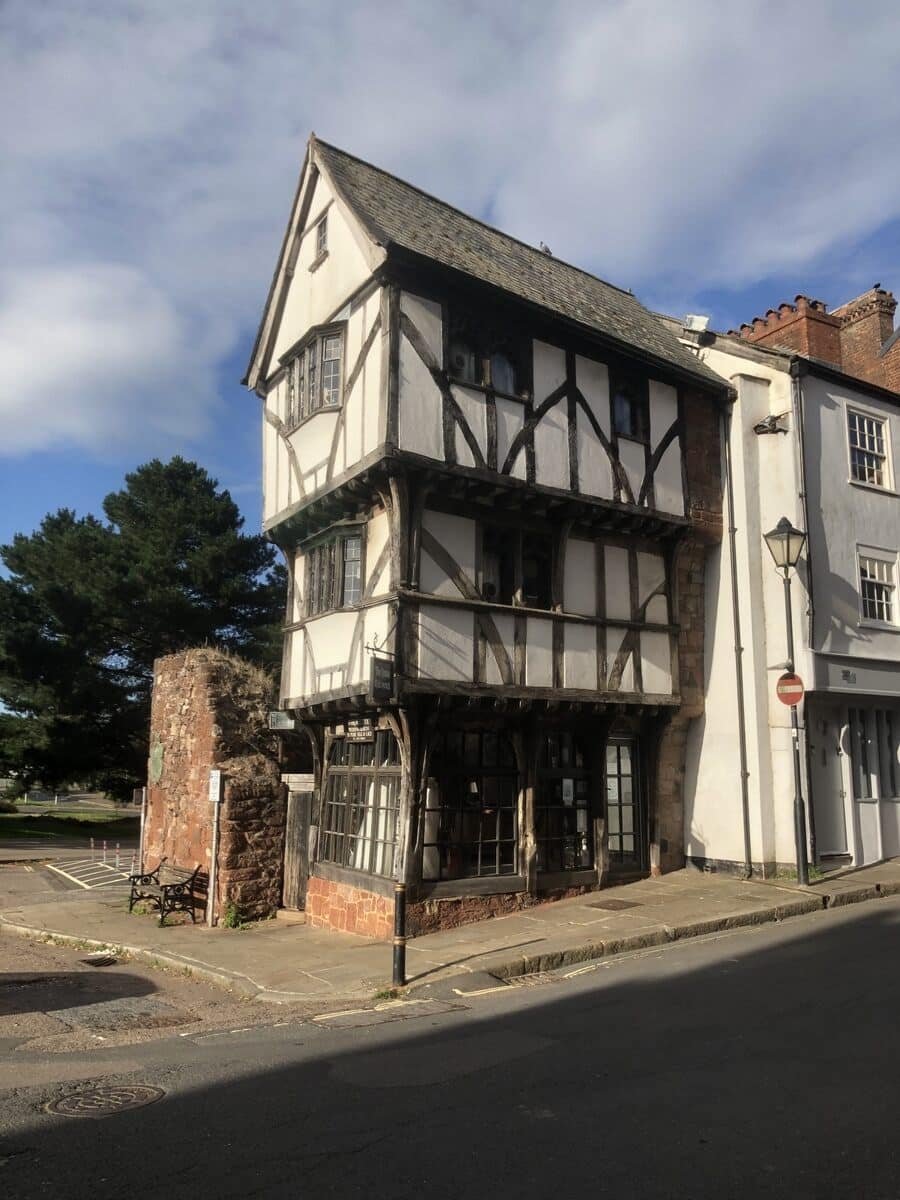We have found some of the most unusual things to do in or near Exeter that you must see.
1. Exeter’s Underground Passages.

These medieval tunnels provided water to the city above through centuries of civil war and plague.
Rumoured to be the product of civil war, or as a refuge during a plague, the Exeter Underground Passages had brushes with both, but were actually constructed with the simple goal of delivering clean water.
Built in the 14th century the crude, narrow tunnels run under a large portion of the city of Exeter. When they were constructed, the shafts actually ran past the city limits under the protective outer wall to natural springs which would provide the citizens behind the wall with clean drinking water, a precious commodity in medieval times. The passages are short and tight which made work in the tunnels a cramped and uncomfortable business. When civil war did finally come to the city, many of the tunnels and chambers were bricked up to prevent them being used as a military backdoor. The water works were reopened after the fighting stopped and the aging tunnels were continually improved upon over the centuries, eventually incorporating England’s first use of cast iron piping.
When a cholera plague hit the city in the 1800’s it was decided that the water system needed a full overhaul and a number of new water sources were created, and Exeter slowly weaned itself off of the natural well. In 1901, the passages were finally closed down completely and they were quickly forgotten.
The passages were reopened in 1992 as a historical attraction. Now visitors can explore the tunnels via guided tours and learn about the history of the passages in the modern information centre. Walking through the historical subterranean warren can be thirsty work, but visitors should bring their own water.
2. Parliament Street.

At just 25 inches at its narrowest point, it’s one of the smallest streets in the world.
Along the bustling high street in Exeter, this tiny passage is easily missed. It’s one of the smallest streets in the country, at 25 inches at its narrowest point. It’s also a useful shortcut!
According to a nearby plaque, the city claims this is the narrowest street in the world (though this claim has been disputed). It is, though, the narrowest street in Britain.
The passageway was built sometime during the 14th century. Up until the 1700s, it was common for people to dump their chamber pots into the street. It was called Small Lane before the city gave it its current moniker.
Parliament Street received its name during the 19th century. Supposedly, the city council gave it the new name to express its displeasure at Parliament passing the 1832 Reform Act, which was meant to increase (male) citizens’ voting rights.
Locals once raised funds to petition to have the street widened, but alas, construction never began and the small street is just as thin as ever.
3. House That Moved.

Old Tudor home moved on thick iron rails to a new spot.
Long famous for its ancient and historic buildings, Exeter has one house that stands out from all of the rest. As the story goes, the move that would be remembered generations later began on Saturday, December 9, 1961, when the house was raised a few centimetres. Over the next two days, on Sunday and Monday, the house was moved to the edge of Edmund Street before beginning its journeys up the hill.
On Tuesday, December 13, 1961, police closed Edmund Street to traffic and the house was scooted to the centre of the street on massive iron rails. The rails and wheels were then turned 90 degrees to face up Edmund Street and the longest and hardest stretch of the move began. Air compressors drove the winches and the house was slowly pulled on the rail up the hill. At the same time, workers were adjusting corner jacks to keep the structure upright – if they didn’t, surely the house would have tumbled backwards down the hill.
The 14th-century Tudor building was moved all because archeologists couldn’t bear to part with it, but the city needed to run a road right through the property it originally stood on. This was a long and expensive move, as the house weighed more than 42,000 pounds or 21 tons. What made the move even more surprising – and maddening for those who had to reroute their traffic when Edmund Street was blocked off – was that the house was in a sorry state of disrepair. It was historic, though!, the archeologists claimed; they were able to push hard enough for the house to be saved.
Once the move was completed, the house was cemented down to look as though it has been standing in its current position for centuries. No longer occupied by a family or used as a house, the now-famous structure has served as an antique dealer, a gem dealer, and a wedding dress shop. Even though nobody lives inside of it, the house is still outfitted with a kitchen, a living room, and a bedroom on the top floor.
4. House of Marbles.

This historic factory peddles classic toys from the picturesque English county of Devon.
Dedicated to the production of marbles and other classic childhood pastimes, House of Marbles was founded in 1973 by a craftsman who originally specialised in board games. And over four decades later, this quirky factory is still facilitating play.
Located in Bovey Tracey, a significant region in the history of ceramics, House of Marbles is a hub of niche art forms with old-world origins. The complex is complete with on-site glass art facilities, shops, a restaurant, and several museums dedicated to toys and games, ceramics, glassware, and of course, marbles.
A source of marvel and nostalgia, the marble gets its due at this unique facility. The Glass and Marble Museum is undoubtedly a highlight of the attraction, tracing the 4,000-year-old history of these beguiling objects. Visitors are educated about the history and technique of marble-crafting and glass-blowing while they peruse the museum’s impressive marble acquisitions, with the opportunity to try their hand at what may just be the largest Marble Run in the U.K., entitled “Snooki 2000.”
Over at Teign Valley Glass, visitors can watch working artists employ both traditional and contemporary techniques to craft hand-blown masterpieces in real time. A Pottery Museum examines another ancient art form through the exhibition of ceramic objects and artefacts, some of which date back to the 18th century when Bovey Tracey Potteries—a popular line of pottery made from Bovey Basin clay in Devon—was among the first examples of mass-produced ceramic goods. The Pottery Museum also showcases fine examples of muffle furnaces, high-temperature ovens used to bake ceramic artworks.
Over at the Games Museum, 17th-century toys and vintage board games delight children of all ages. And when you’ve tired of simply looking at toys, head over to the Games Garden to play marbles and ascend a climbing wall. As of 2018, a Brass Rubbing Trail has been added to House of Marbles’ list of activities. This permanent attraction is ideal for families with young ones age four and up, and includes a self-guided tour of 10 different trails.
5. The Tar Barrels of Ottery St. Mary.

Flaming barrels of tar race through these village streets on Bonfire Night, a tradition that dates back centuries.
In England, the tradition of lighting up bonfires and setting off fireworks on Guy Fawkes Day dates back over 400 years. In the East Devon village of Ottery St. Mary, on November 5th—also known as Bonfire Night—hundreds of people crowd the narrow streets for some particularly perilous revelry.
When Bonfire Night falls in Ottery, runners grab blazing barrels of tar, hoist them on their shoulders, and race them through the village streets. It’s no joke here—the flames are real, and chaos seems to be in charge. But they’ve been at it for hundreds of years, and only village veterans are given the honour of running the barrels.
The custom of using tar barrels to kick off Bonfire Night isn’t unique to Ottery. Other towns and villages light them up too, but typically roll them through the streets. It’s not clear exactly when, but at some point (villagers say it was at least a couple hundred years ago) someone thought rolling barrels of flaming tar was kind of a bore, and carrying them on your back was the way to go. It’s been an Ottery tradition, far outliving health and safety regulations, ever since.
The celebration of Guy Fawkes Day/Bonfire Night comes from a failed attempt to assassinate the British monarch. It was 1605, and a rabble-rouser named Guy Fawkes and eleven co-conspirators dreamed up a plot to blow Parliament sky-high while King James was in the House. Discovered lurking in the cellar with thirty-six barrels of gunpowder and a pocket full of matches, Fawkes became the fall-Guy for the thwarted plot. With the King’s life saved, November 5th soon after became a day (well, mostly night) of national thanksgiving.

